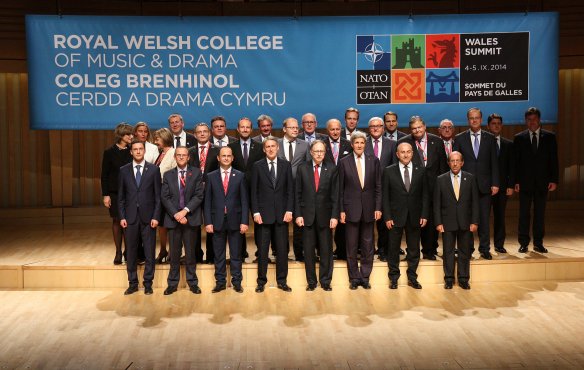Against the background of increasing dependence on technology and on the internet, NATO is advancing its efforts to confront the wide range of cyber threats. Presented at the organization’s 2014 summit in Wales, on 4 September 2014, a new defense policy states that there is no distinction between cyber attack and physical attack.

NATO Foreign Ministers’ dinner September 2014
CC BY 2.0 Foreign and Commonwealth Office
The update from the 2011 policy, to keep pace with technology developments, includes changing NATO’s mission of collective defence with respect to cyber attacks.
Since the late 1990s, military, political and commercial actors have worked to frame cyber-attacks as forms of warfare. NATO’s new cyber defense policy (presented at the NATO 2014 summit) provides that cyber-attacks may activate the collective defense clause under Article 5 of the NATO charter. This formal shift marks a new milestone in the militarization of cyberspace.
As expected, the new policy is unclear on key issues. For example, the threshold for triggering the application for Article 5 will be determined on a case-by-case basis. As noted by Oana Lungescu, spokeswoman for NATO, “we will not say in exactly which circumstances or what the threshold of the attack has to be to trigger a collective NATO response.”